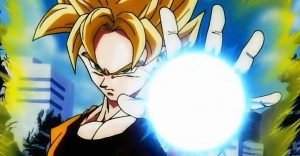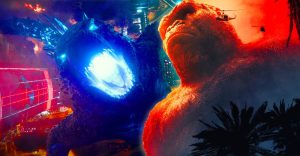Bad Batch: How Strong Is Omega Compared To Other Clones?

Standard Republic clones and the enhanced clone super-soldiers, as seen in Star Wars: The Bad Batch, are demonstrably physically strong, but how powerful is Omega compared to all other clones? All clone troopers are created from the template of Jango Fett, whose status as one of the galaxy’s best bounty hunters was achieved through great strength and cleverness. This, among other reasons, made Jango the ideal clone template for the Republic military. Due to their intense training and Fett heritage (and, in the Legends continuity, Mandalorian culture), clone troopers exhibited astounding strength. Omega is a particularly unique clone, with modifications and training (or lack thereof) that impact her strength.
Clone troopers train for combat for nearly their entire lives. Although clones age at twice the rate of a normal human, their decade of preparation renders them among the galaxy’s most effective warriors. Throughout the films and Star Wars: The Clone Wars, clone troopers are shown engaging in melee combat with standard B1 Battle Droids and even the hulking B2 Super Battle Droids, destroying the Separatist war machines more often than not. The commandos of Clone Force 99, aka the Bad Batch, are modified with various mutations, resulting in the Republic’s deadliest clones. One Bad Batch member, Wrecker, was given specific modifications that made him far stronger than any human.
Omega, one of the newest additions to the squad, is one of only two unmodified Jango Fett clones and his only female clone. She received no combat training, growing up as a medical assistant instead, and as a result, Omega lacks the physical strength she’d have if she were raised as a clone trooper. This is first demonstrated in The Bad Batch season 1, episode 6, “Decommissioned,” where Omega struggles to use a Zygerrian energy bow, a weapon that requires strength to operate. As the season progresses, Omega gradually increases in skill with the weapon, indicating that her strength is increasing as well. In the season finale, “Kamino Lost,” Omega isn’t quite strong enough to lift heavy debris off of her temporary and reluctant ally, Crosshair, but she once again uses her energy bow to assist AZI-3 with the task.

Omega’s lack of physical strength for much of season 1 is understandable, given her lack of modifications and military training. Omega never received growth acceleration treatments like most clones, and thus is physically about 13-years-old during the events of The Bad Batch. Even if she had clone trooper training and programming, her strength would be limited by her age. Omega does appear to learn new skills and grow in strength astoundingly quickly, however, as shown with her blaster and energy bow use.
Omega’s gradually increasing strength and skill in combat is part of what makes her and numerous other Star Wars protagonists compelling characters. Luke Skywalker’s journey from Tatooine farmer to Jedi Knight is one of the high points of the original trilogy, and Han Solo’s growth from Corellian street criminal to Rebellion hero in canon and Legends material is equally thrilling. Omega is still in the early stages of her heroic character arc, but her growth in The Bad Batch season 1 suggests that she’ll become a similarly compelling protagonist in future seasons and other canon properties.
The Star Wars franchise is also known for emphasizing strength in more than a literal sense. Omega never received clone trooper training or conditioning, but she is as tenacious, intrepid, and clever as her free-willed clone brothers, compensating for her limited physical strength in The Bad Batch season 1. While Omega isn’t quite as strong as other clones, she will continue to grow and hone her skills in Star Wars: The Bad Batch until her literal strength matches her incredible strength of character.
- Rogue Squadron (2023)Release date: Dec 22, 2023
About The Author


















